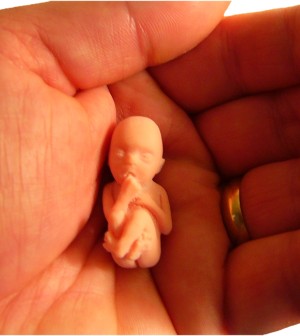- Navigating Your Midlife Crisis: Embracing New Possibilities
- City Raccoons Showing Signs of Domestication
- Mapping the Exposome: Science Broadens Focus to Environmental Disease Triggers
- One Week Less on Social Media Linked to Better Mental Health
- Your Brain Changes in Stages as You Age, Study Finds
- Some Suicide Victims Show No Typical Warning Signs, Study Finds
- ByHeart Formula Faces Lawsuits After Babies Sickened With Botulism
- Switch to Vegan Diet Could Cut Your Greenhouse Gas Emissions in Half
- Regular Bedtime Does Wonders for Blood Pressure
- Dining Alone Could Mean Worse Nutrition for Seniors
Child Safety Seats Often Incompatible With Cars: Study

Children’s car seats often do not fit properly inside family vehicles, which could reduce their safety and effectiveness, a new study indicates.
The researchers found that 42 percent of the time, children’s car seats are not compatible with the size and shape of vehicles’ seats.
Parents or caregivers who use towels and pool noodles to try to help a child’s car seat fit inside their car may be further compromising proper installation, the study authors added.
“I want to emphasize that all car seats are safe and have passed federal regulations. But, to really optimize the safety of a child’s car seat and provide the best protection for the child, one must make sure it fits properly in the vehicle,” study author Julie Bing, a research engineer at Ohio State College of Medicine’s Injury Biomechanics Research Center, said in a university news release.
“We want to encourage parents to take measurements of their car in order to make the most informed decision when choosing the safest car seat option for their child,” Bing added.
In the study, the researchers compiled the dimensions of 61 vehicles, as well as 59 child car seats, and compared them to identify those that were the least compatible.
After analyzing 3,600 possible child safety seat-vehicle combinations and examining 34 actual installations, the investigators found that less than 60 percent of rear-facing infant seat-vehicle combinations resulted in a proper fit, in which the vehicle seat angle and the car seat base angle met manufacturers’ requirements.
In more than 63 percent of rear-facing child seat-vehicle combinations and more than 62 percent of combinations involving forward-facing child car seats, the width of the base of the car seats fit securely between the vehicle’s seat pan bolsters, the findings showed.
Meanwhile, in more than 66 percent of combinations, forward-facing child car seats didn’t back up against the vehicle’s headrests.
The researchers cautioned parents to confirm that the angles of the seats in their vehicle and their child’s safety seat align properly, taking into account for the vehicle’s headrest.
“We recommend parents go to the store and ask if they can take the model off the shelf and go out to their car and try it,” Bing said. “It might look great on the shelf and have all the greatest safety ratings but, if it doesn’t fit in your vehicle, it may not be the best option for you.”
The study was published in the Oct. 5 online edition of the journal Traffic Injury Prevention.
More information
The American Academy of Pediatrics has more on child car seat safety.
Source: HealthDay
Copyright © 2025 HealthDay. All rights reserved.










